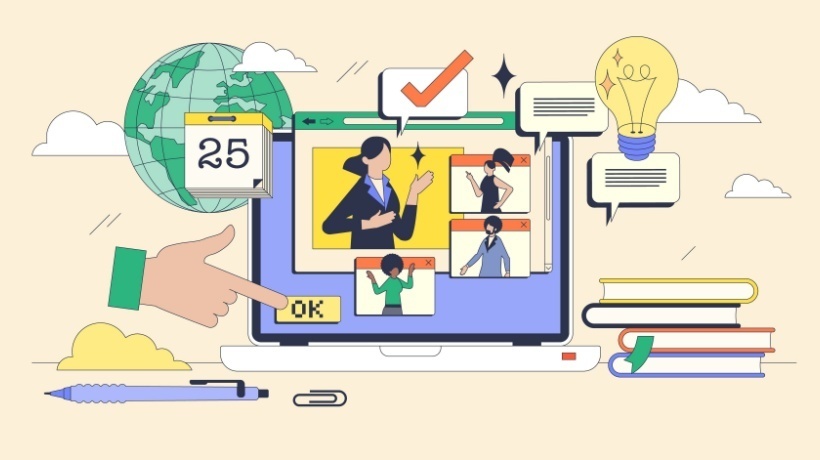Avoiding The Pitfalls Of Digital Learning
Digital learning is an exceptional teaching tool. It has enabled students to become more engaged in their learning both in and out of the classroom. Schools and universities have embraced digital learning as a significant part of their instructional delivery strategies. For students in K-12 institutions, one would be hard-pressed to find any classroom without a bank of computers, filled with learning software in all curricular areas. At both the secondary and university levels, students have options of in-class instruction, online courses, and blended instructional delivery that combines in-class and digital learning activities. However, in their zeal, educators have made some mistakes – mistakes which can be avoided with a careful and reasoned approach.
- Taking time to think things through very carefully.
Educators love anything that will make their teaching tasks more efficient. When digital learning began to appear, it was only natural to become excited about a new tool that would allow students to become more engaged, to practice skills individually, and that would provide immediate and automatic feedback on mastery. And the individual nature of assessment allowed teachers to diagnose lack of mastery and to provide additional remediation for those students in need. All of this was a huge improvement over traditional methods. In response to this enthusiasm on the part of educators, textbook and educational software companies began to develop entire curricular offerings in virtually every subject and to attempt to sell these as complete packages to schools and school districts. They took the bait. Schools have spent thousands upon thousands of dollars purchasing huge software packages and online courses for classroom use. What they failed to realize was that these all-encompassing packages did not honor all learning styles, and were not a “fit” for certain parts of their student populations. What they also failed to realize was that, without proper teacher training and support, these packages would lie dormant in classroom computers, without teacher “buy-in.” Have a look on this publication about digital learning costs that perfectly describes all estimated expenditures in 2012 year. Schools are now learning from mistakes that they have made. Like any adoption of learning materials, there needs to be a process in place for teachers to be introduced to the software/courses and to have time to make judgments as to their efficacy. - Ensuring student access.
In the classroom, all students have access to the digital environment and to the interactive learning experiences that software and web-based activities offer. Most of these same students are able to plug-in to these environments at home as well, with portals that have been provided by their schools. Unfortunately, there remains a large student population without access to these out-of-class and/or online experiences because there are either no devices in the home or because they reside in areas so rural that access is not available. Educators must still accommodate these disparities by ensuring that these students have other learning materials which will allow them to practice skills and reinforce concepts. And providing these students with more time for research within the school day, or allowing them to print off materials to take home is essential. - Preserving the student-teacher relationship.
Computer-assisted instruction and practice certainly relieves the teacher of some of the traditional classroom duties, and it becomes very easy to become an inactive supervisor rather than an individual who remains personally involved as students engage in learning activities remember that students are very different. Teachers must remember that the relationship they have with their students is an important one, and encouraging and supportive interaction must continue to occur. There are times when nothing can replace the personal attention of a teacher. - Mindfulness of disparity of student technical skills.
Students who have enjoyed technology from a very young age are quite tech-savvy; however, those without technology in their homes will not be. It is a critical task for the teacher to ensure that every student has the skills to use devices, the Internet and the software for maximum benefit. Teachers must not assume that there is a level playing field here. There is a good list of basic computer skills for students that can be used as a checklist or guideline. - Privacy and security.
Fortunately, most schools have installed “parental controls” that prevent students from accessing inappropriate sites; however, these are not fail-safe, and students may fall prey to “click-wrap” agreements that include charges or require the submission of personal information. Vigilant monitoring on the part of classroom teachers of minor students is absolutely essential – no instructor should be sitting at a desk engaged in another activity while students are at computer stations. - Failure to assess and evaluate the efficacy of programs/courses.
In this age of accountability for educational delivery and student progress, it is surprising that regular and systematic assessments of digital learning are not more prevalent. While a number of studies exist that demonstrate good learner outcomes through digital learning, these studies also point to the importance of interaction with peers and with teachers, particularly when students are engaged in fully online learning environments. Studies by individual schools and school districts, in terms of learner outcomes based upon their own curricular goals, are lacking, however, and no educational delivery system can be adequately evaluated without such studies.
Preparing Students For A Fully Digital Learning Environment
Access to online coursework on the part of teens and adults has exploded in recent years, as both traditional and non-traditional students take advantage of the flexibility such coursework allows. These courses can be more rigorous, however, and instructors must prepare students for the challenges that lie ahead:
- While interaction with fellow students and instructors is almost always available, it is not as intimate as the interaction in a physical classroom environment. Instructors must ensure that there are ample and worthwhile opportunities for student-to-student and for student-to-instructor interaction.
- Students who are not skilled and rapid readers will find themselves bogged down in front of their device screens and may need to find ways to enhance their reading/comprehension abilities though these speed reading tips might come in handy to them.
- Instructors should discourage students without high levels of organization and motivation from engaging in wholly digital coursework.
Failure to find the appropriate blend between digital learning outside of the classroom and tools for student to collaborate/converse with one another and with their instructors.








